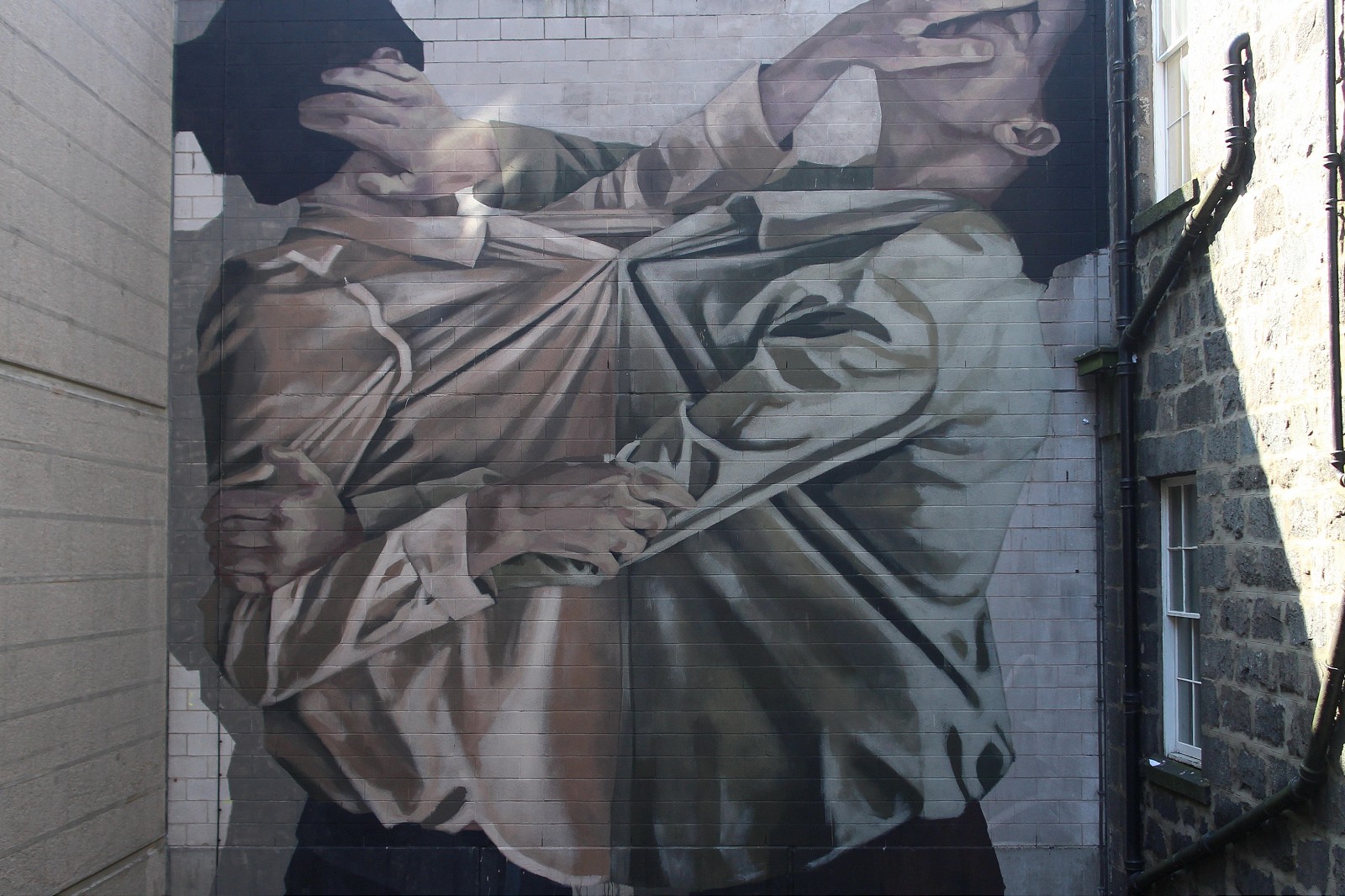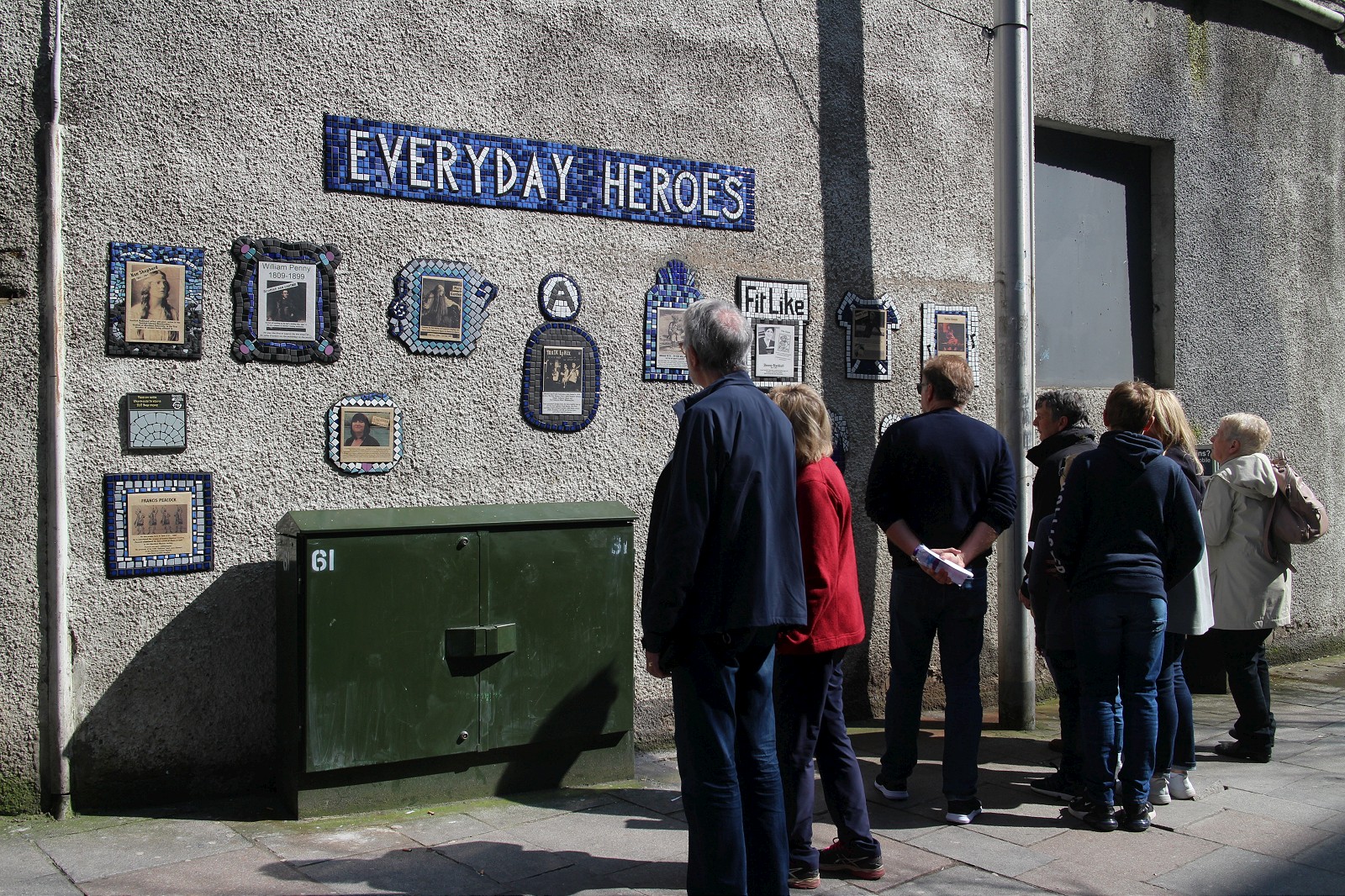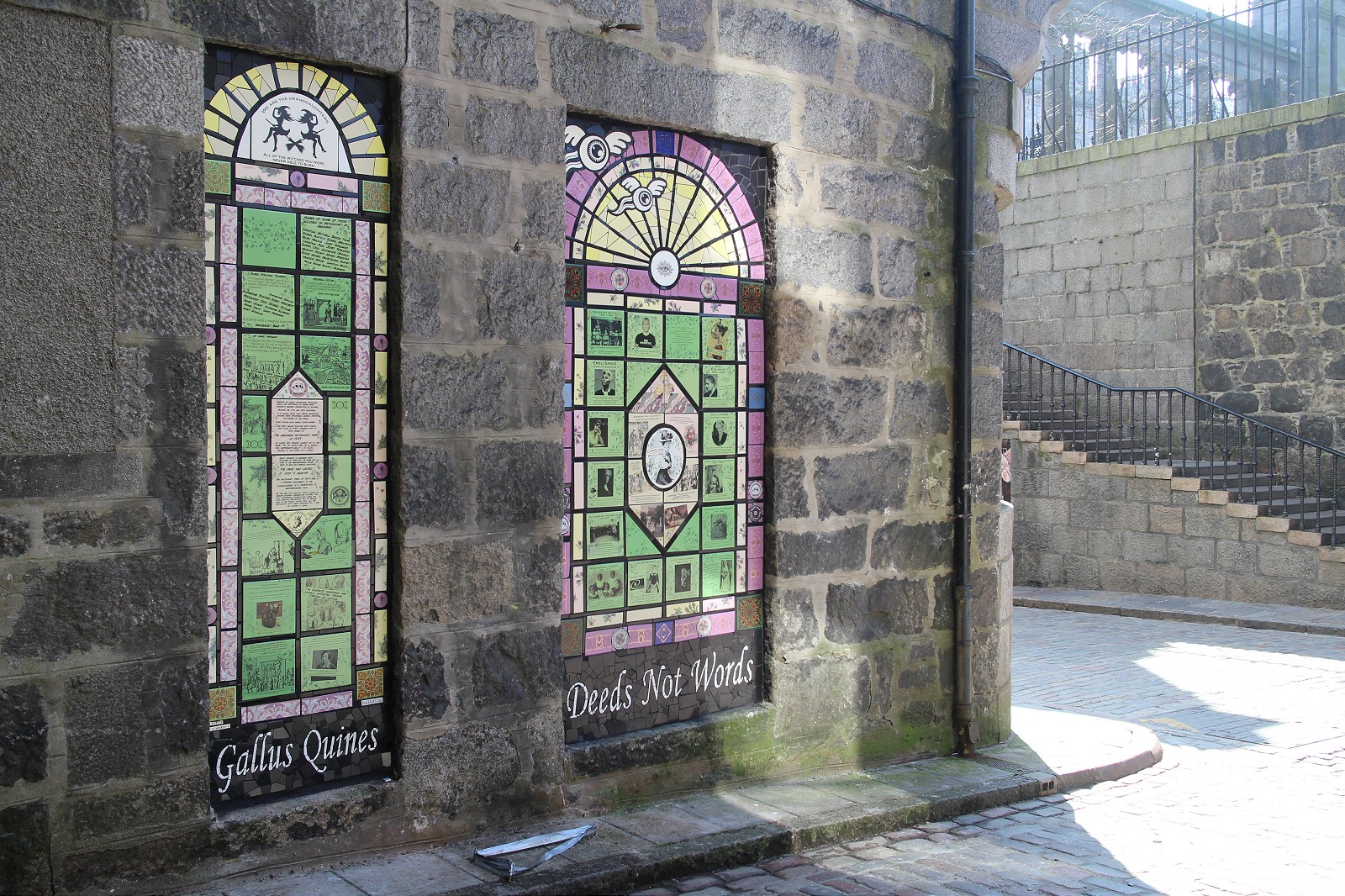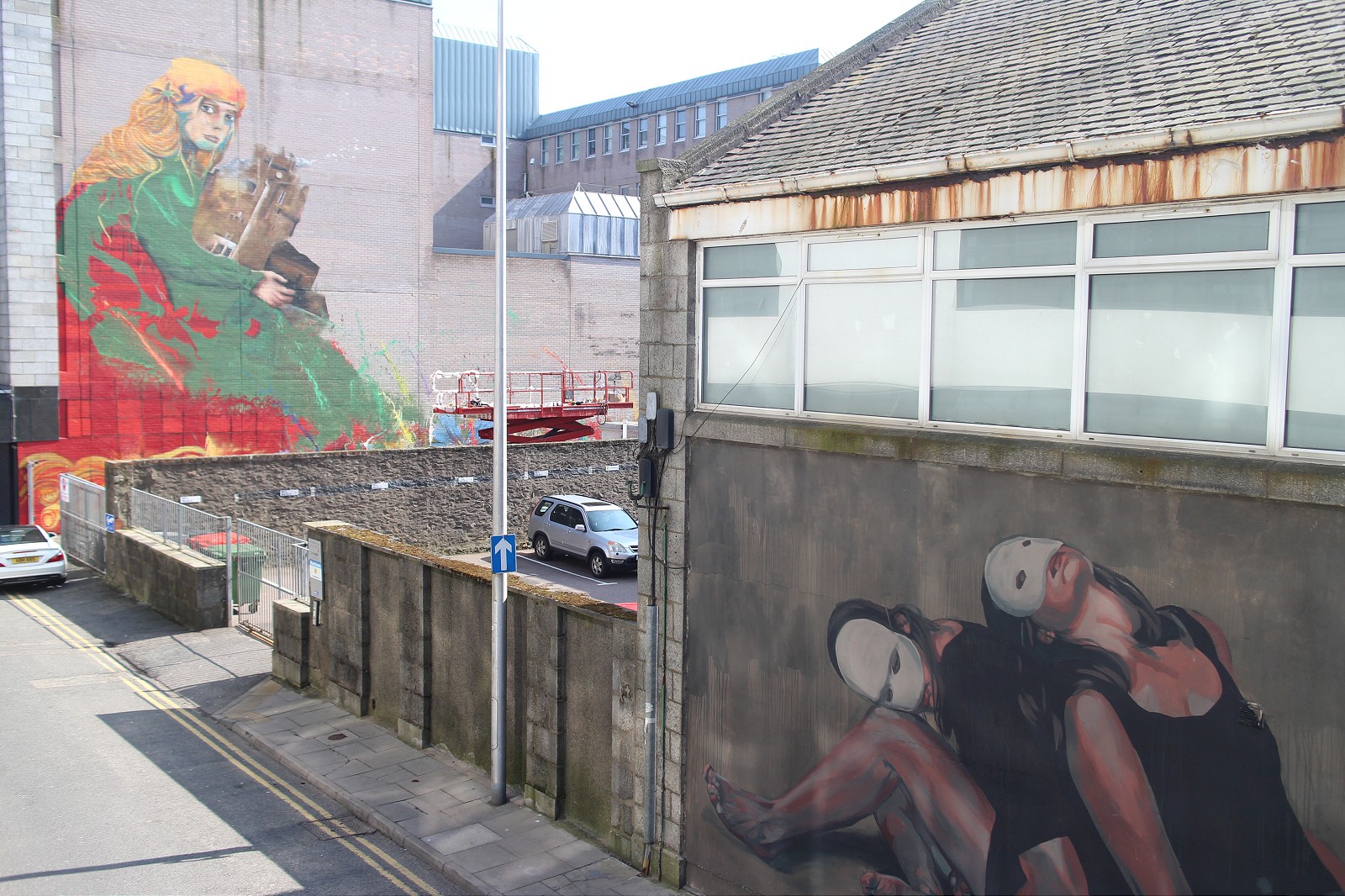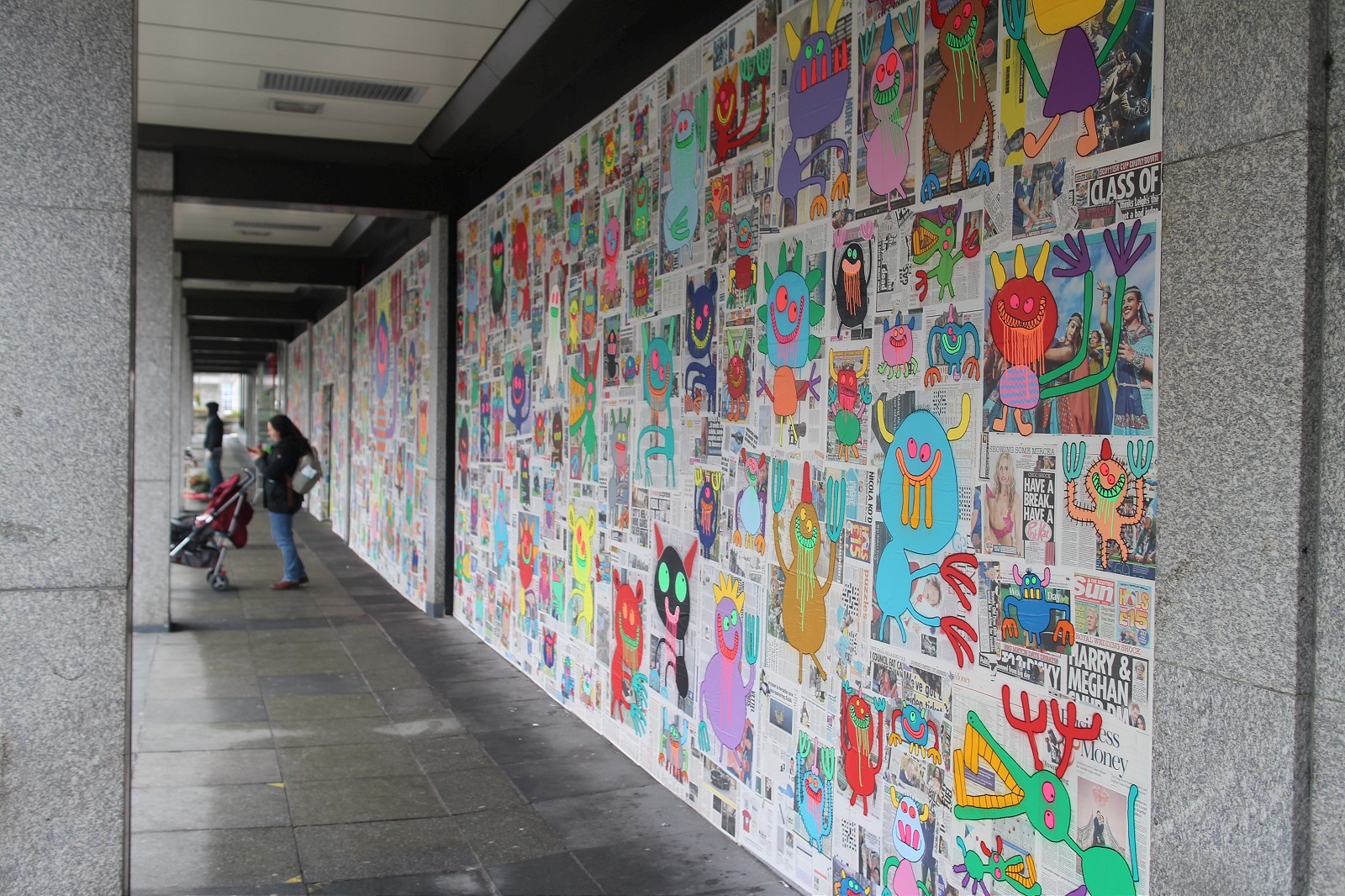Once again, the very beginning of spring was reserved for the Nuart Aberdeen events to take place all around Granite City. With the weather gods being incredibly generous in the region known for clouds, fogs and rain (which we did experience), the first Nuart Aberdeen street art tours that were able to take place in warm sunny weather once again raised the bar for similar efforts worldwide.
With a short introduction and performance program, this year’s event was officially introduced to the public on Saturday, the 14th of April. Eager to see and enjoy all the new works, the large crowds followed the tour guide through the streets and alleys, admiring the large new murals and discovering the smaller intervention gems.
Starting from The Green, the first works were by Argentinian-born painter, Hyuro and London-based craftivist, Carrie Reichardt. Hyuro painted one of her poetic figurative murals depicting two female figures embracing and pushing each other away. With a strong focus on showing the fabric drapes and the hands of her characters, her signature palette blended perfectly with the dimmed colors of the building surrounding it. Not far from her work, Reichardt created tow of her mosaic pieces that celebrate the past of Aberdonian women, with a focus on the Suffragettes movement, as well as local everyday heroes. Planned, designed, built and installed with a help of the community, these pieces quickly became new landmarks, giving the community the feel of uniqueness and power. Not far from there, Amsterdam-based Bortusk Leer was working on his biggest public work to date, basically covering up the existing billboard ads with countless pasteups of his colorful animals painted on newspapers. The vibrant result was the perfect backdrop for the successful Chalk Don’t Chalk workshop lead by the artist. A couple of blocks further, Glasgow-based Elki presented the progress in his practice by painting an elaborate, realistic, incredibly detailed 30 layer hand-cut stencil next to his piper piece from 2004.
On the other side of the city center, Bordalo II and his assistant constructed a sculptural portrait of Scotland’s national symbol, the unicorn, from waste collected around Aberdeen. Continuing his ongoing series of trash animals, this particular piece represents the idea of how even our dreams get affected by pollution and environmental issues. And finally, just around the corner, Ernest Zacharevic spent long days working on the biggest piece of the festival, cleverly incorporating his playful children characters and local symbols as granite and seagulls into the existing architectural elements of a modern building. The finished piece is quickly becoming a landmark of the city, unifying the old and the new, the traditional and the modern, and could almost serve as a metaphor for the efforts of the City Council’s public arts program – building cultural links for the new, less gray and more lively Aberdeen. And while most artists were busy on their chairlifts, Dr D was roaming the streets, adding confusion into everyday life of passers-by. After pasting up countless humorous headlines and installing fake signs, he eventually took a trip to Trump International Golf Links – Aberdeen, and spread his subversive message around the location, hammering in the final nail into the notion that Nuart is one of the most dedicated and diverse Street Art festivals around. So, with the weight of expectation being much heavier after last year’s successes, the artists and the crew behind this year’s Nuart Aberdeen once again played an important, if not crucial role in the evident change that Aberdeen is experiencing.




